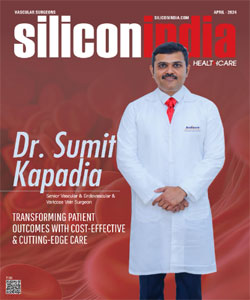Proper Breathing Is Key To Body, Mind Control
BANGALORE: Breathing is the most essential and frequent activity that we engage in from birth till death. Yet it is one of the most neglected aspects of our existence because we erroneously presume that it is entirely an involuntary function. The end result is that this giver of life has been ignored, leading to numerous unwanted consequences.
Our lungs have the capacity to take in about four litres of air in each breath. In olden times, we used to take this full quota when we were active throughout the day, first as hunter-gatherers and then as crop growers. The modern lifestyle has turned us into veritable couch potatoes that barely take half a litre of air per breath. That is only one-eighth of the requirement. Our diaphragm barely moves if we are sedentary, with the result that the lower part of our lungs hardly gets any oxygen.
The shocking shortfall not only causes numerous aches and pains and diseases but also leads to negative emotions like anger, anxiety and stress.
Air is available free of cost, but we have to make a deliberate effort to ensure that we take in our full quota. The most important item on the to-do list is to set aside at least one hour every day for exercises which make us moderately breathless. Regular brisk walking is an ideal starting point. In the process we will be taking a lot of air willy-nilly.
You can also train yourself to take in more oxygen even when at rest. The technique is called yogic or diaphragmatic breathing.
Lie down or sit comfortably. When you start inhaling, fill your belly from the lowest part up so that by the time you have taken the full breath, your tummy is protruding as well as the chest. Hold for a few seconds and then start exhaling while at the same time contracting your belly.
This should be done preferably on an empty stomach. So reserve five minutes for this practice before breakfast, lunch and dinner every day. After you have practised for some weeks, start spending all your spare time in mindful breathing.
Suppose you are having to wait at traffic lights. Instead of ruing the delay, utilise the time for diaphragmatic breathing. As your practice increases, you will notice that you have started pumping your belly without even noticing.
Interestingly, many of those who lead a sedentary life tend to do exactly the opposite. They contract the belly when they breathe in and expand it when they breathe out. If you too are making that mistake, make a persistent effort to correct it because this kind of breathing is worse than not moving the belly at all.
Please note that you are not pumping air into the belly. It is going into the lungs only. It's just that when you expand the belly, the diaphragm is forced to move down and the lungs can take in more air.
You will soon find that your stress level has started going down. The air that you breathe, besides nourishing your body, has a vital force called 'Prana'. The more air you pump in, the more vitality you have.
There is an additional advantage. This pumping action strengthens your abdominal muscles and helps in reducing the waist size. The yogic way of breathing which involves 'Kumbhaka' (making a big belly after a deep inhalation and holding the breath for a few seconds) and 'Rechaka' (expelling all air and holding for a few seconds while the belly has been pulled in) helps one increase the lung capacity to as much as six litres.
READ MORE: Exposure To Chromium Increases Risk Of Autism In Children



